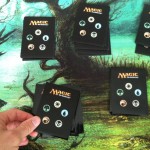I learned from my informant that ever since she was a little girl, her family has always hosted a large Thanksgiving dinner. Members of her extended family as well as members of the Stern extended family would come to her house and all have a big dinner. Her mother would make the turkey and everyone else would bring something along or make something. One person usually brought a vegetable salad. She herself started baking desserts for Thanksgiving when she was in high school. And these desserts rarely included anything pumpkin because no one in the super-extended family liked pumpkin very much. Then after everyone was done eating and talking, they would all gather round and play card games and eat popcorn. Hearts was usually the game of choice but some people also played spades. Later in life, after most of the younger family members grew up and had gotten married, and the large family became even larger, they started playing huge games of hearts with multiple decks.
The rules for regular hearts are listed here so that the extended rules make more sense for those who have never played the original. In hearts, a standard 52-card deck is divided between four players. The player to go first in a round plays a card, then the next player must play a card of the same suit if possible. After all four players have played, whomever played the highest card of the leading suit takes all the cards, then must be the starting player in the next round. For the first round, the player with the 2 of clubs must go first. Hearts may not be played on the first turn, and a player may not lead a turn with hearts until hearts have already been played. Hearts are worth one point, and the Queen of Spades is worth 13 points. At the end of the game, you tally all the points you have, and at the end of all the games, the player with the fewest points wins. Additionally, before each game, you must pass three of the cards in your hand to the player in a given direction, alternating between left, right, across, and no pass.
For the extended version, all of the regular rules apply, except that the player to go first on the first round is the first player to the left of the dealer who has a 2 of clubs. The only major addition to the rules is that multiples of the same card cancel out. So if there are two King of Clubs on the board, and clubs is the leading suit, neither king counts for the highest card, and instead the turn goes to the player who played the highest singular card (non-canceled) in the leading suit. In games with three or more decks, if the third multiple of a card comes out, then that card is not canceled and is treated normally. Additionally, the passing order is slightly modified, and is now left, right, two to the left, and two to the right. According to my informant, these new rules lead to emergent play. First and foremost, players have a lot more power depending on where they are in the turn. Players near the end are often begged and pleaded to cancel out whoever is highest (or not to cancel out the high player if said beggar/pleader has the second-highest card). If you want to screw over a particular player, you may choose to cancel the high card and force someone else to take the turn. Also, she says that when you are passing cards at the start of the turn, and your hand has multiples in it, you should pass one of the multiples to the designated person and then try and work with them to hurt others. For instance, if you are dealt both Queen of Spades, you can give it to the designated person, and then plot to play them one after another, preventing either of you from having to take your own queens as well as sticking some unlucky bastard with 26 points in one turn!
My informant also told me of one last tradition that revolves around this large game of hearts. At the end of the game, either when someone gets 100 points or everyone gets tired, the three players with the highest scores all got to go on the family vacation.

